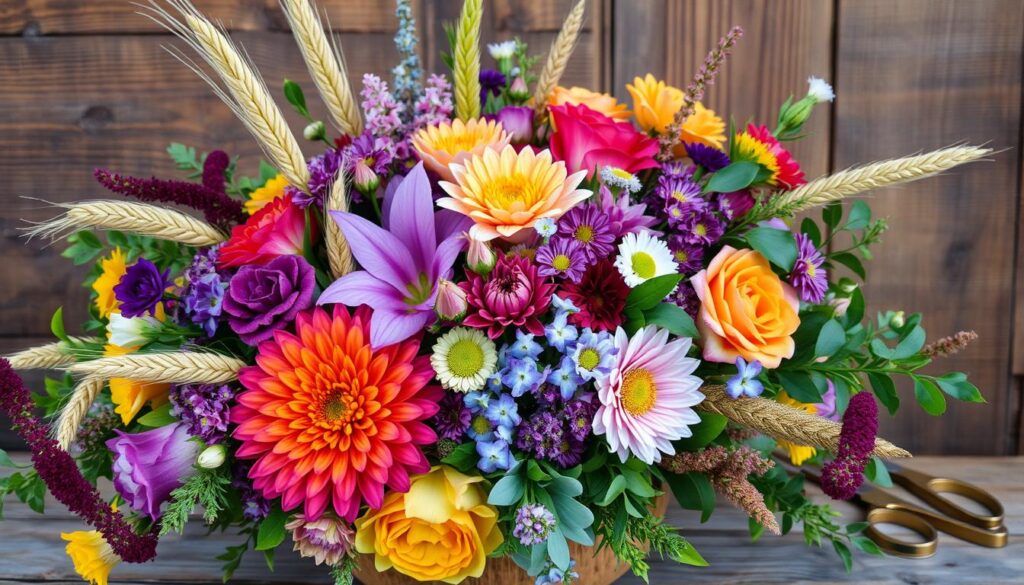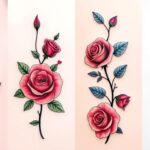The Georgia Future Farmers of America (FFA) Floral Design program shows how farming meets art. It’s about turning seeds, soil, and creativity into stunning flower designs. These designs tell stories that go beyond just farming.
Starting your floral design journey means seeing how farming and art come together. Students learn new ways to mix farming skills with design. They create amazing artistic compositions that change how we see flower tattoos.
Floral tattoo ideas come from this special mix of farming and art. Young farmers learn to show the beauty of nature through their designs. The GA FFA program helps them see flowers as more than just products.
By doing hands-on work, students gain skills that go beyond school. They learn how farming skills can spark new ideas in art. This prepares them for jobs that mix technical knowledge with creativity.
If you love sustainable farming or want to explore new creative paths, the GA FFA Floral Design program is for you. It’s a chance to grow both your professional and artistic sides.
Table of Contents
Introduction to GA FFA Floral Design
The world of agricultural education is full of creativity and farming. The Future Farmers of America (FFA) is a special place. It combines learning about farming with unique floral designs. This changes how we see agricultural education.
Understanding FFA: More Than Just Farming
FFA is a youth group focused on leadership and personal growth. Students find chances to learn beyond farming. They explore floral design and creative agricultural art.
- Develops leadership skills
- Provides hands-on agricultural experience
- Encourages creative problem-solving
- Offers competitive opportunities in various agricultural disciplines
The Significance of Floral Design in Agriculture
Floral design is a key part of agricultural education. It mixes art with plant knowledge. Students learn to make beautiful flower tattoos through special techniques.
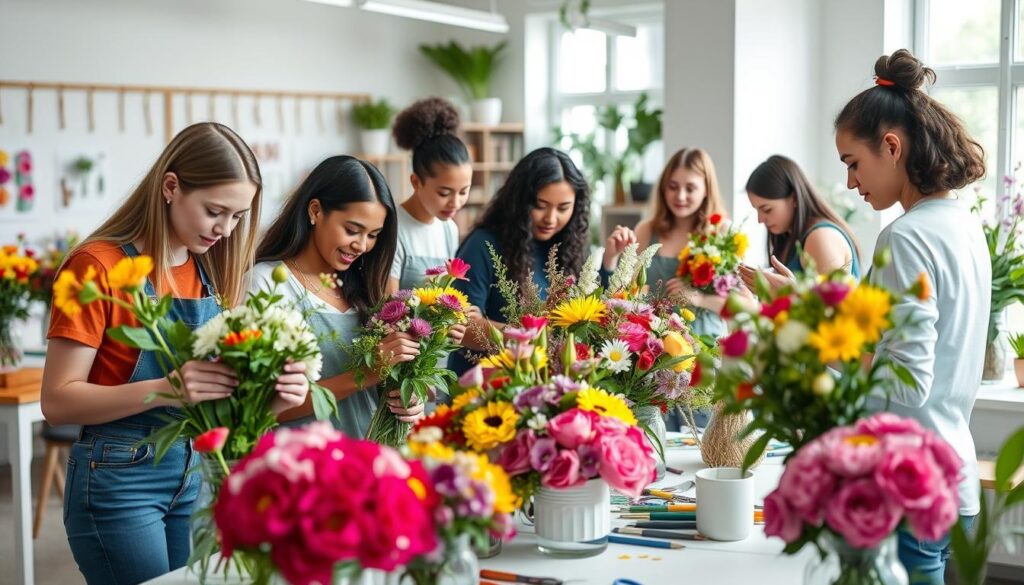
| Skill Area | Agricultural Relevance |
|---|---|
| Color Theory | Understanding plant pigmentation |
| Botanical Knowledge | Identifying plant characteristics |
| Design Principles | Spatial arrangement techniques |
“Floral design is where agriculture meets creativity, transforming raw botanical materials into living art.” – FFA Floral Design Instructor
FFA combines art and farming skills. This helps students find new career paths. They can mix technical knowledge with creativity.
History of Floral Design in FFA
The journey of floral design in the Future Farmers of America (FFA) is truly remarkable. It started small and grew into a big part of FFA’s mission. Agricultural creativity shines through these detailed floral designs.

Milestones in FFA Floral Activities
The FFA’s floral design journey has seen many important moments. Students started using popular tattoo flowers and trendy tattoos in their work. Key achievements include:
- Introduction of floral design as a competitive skill in 1970s
- Development of national-level floral design competitions
- Integration of horticultural techniques with artistic design
- Expansion of curriculum to include advanced floral arranging
Evolution of Floral Design Competitions
Floral design competitions in FFA have changed a lot over the years. What began as small local events has grown into big national championships. These events now draw hundreds of talented young designers.
“Floral design is not just about flowers, it’s about telling a story through nature’s most beautiful medium.” – FFA Floral Design Mentor
These competitions have become places for students to show off their skills in floral tattoos and design. They mix traditional farming knowledge with modern art. Young designers add different cultural touches and eco-friendly ideas to their work.
Skills Developed Through Floral Design
Floral design is more than just putting flowers together. In GA FFA programs, students learn a lot of skills. These skills help them grow in art and work. They learn to be precise and creative, skills that go beyond farming.
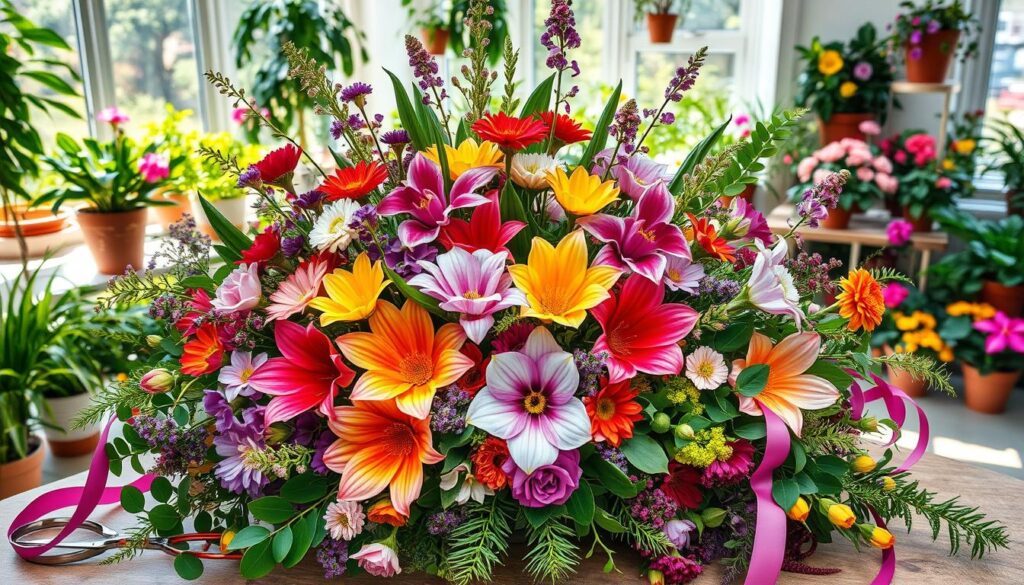
Technical Skills in Floral Arranging
Students get to learn many technical skills. These skills are key for success in their future careers. They include:
- Precise flower selection techniques
- Advanced color theory application
- Plant care and preservation methods
- Specialized cutting and arrangement strategies
These skills help students become as good as top flower tattoo artists. They learn to make beautiful arrangements.
Creative Thinking and Design Skills
Floral design programs encourage creative thinking. Students face challenges that push their artistic limits. They learn to turn ideas into stunning flower arrangements that tell stories.
| Skill Category | Percentage of Improvement |
|---|---|
| Creative Problem Solving | 60% |
| Artistic Expression | 50% |
| Teamwork Abilities | 70% |
| Public Speaking Confidence | 65% |
“Floral design is not just about arranging flowers, it’s about creating art that speaks to the soul.” – Anonymous FFA Instructor
By mastering these skills, students are ready for many careers. They can work in agriculture, design, and creative fields.
Highlighting Floral Design Competitions
The world of FFA floral design competitions is full of talent and creativity. Young agricultural enthusiasts show off their skills through stunning floral tattoo inspiration and flower tattoo designs. They create intricate arrangements that amaze everyone.
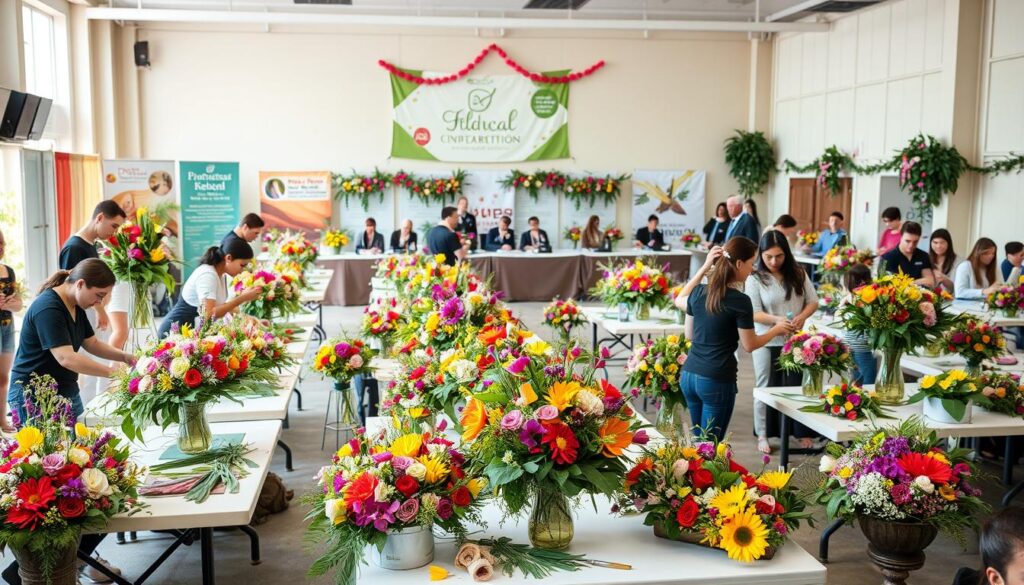
Competitive floral design is a vibrant space for FFA members to express themselves. It draws in passionate young designers. They bring fresh perspectives to the art of agricultural design.
Competition Landscape Overview
The competitive landscape is exciting:
- 75% of local FFA members take part in floral design competitions
- Average of 50 entries per competition
- Top performers can win scholarships between $1,500 to $3,000
Notable Competition Insights
| Competition Aspect | Percentage |
|---|---|
| Participants aged 14-18 | 70% |
| Judges prioritizing originality | 80% |
| Participants showcasing designs on social media | 90% |
“Creativity transforms agricultural education into an art form” – FFA Design Coordinator
These competitions showcase technical skills and spark innovation. Students show remarkable creativity in their floral arrangements. They push boundaries and explore new artistic expressions.
Impact and Recognition
Being part of these events has big benefits. Research shows a 40% increase in student interest in agricultural education. The stunning floral tattoo inspiration from young designers changes how we see agricultural creativity.
Educational Resources for Floral Design
Exploring floral design needs good educational tools. The GA FFA Floral Design program is a great example. It offers a fresh way to learn about agriculture, helping students grow creatively.
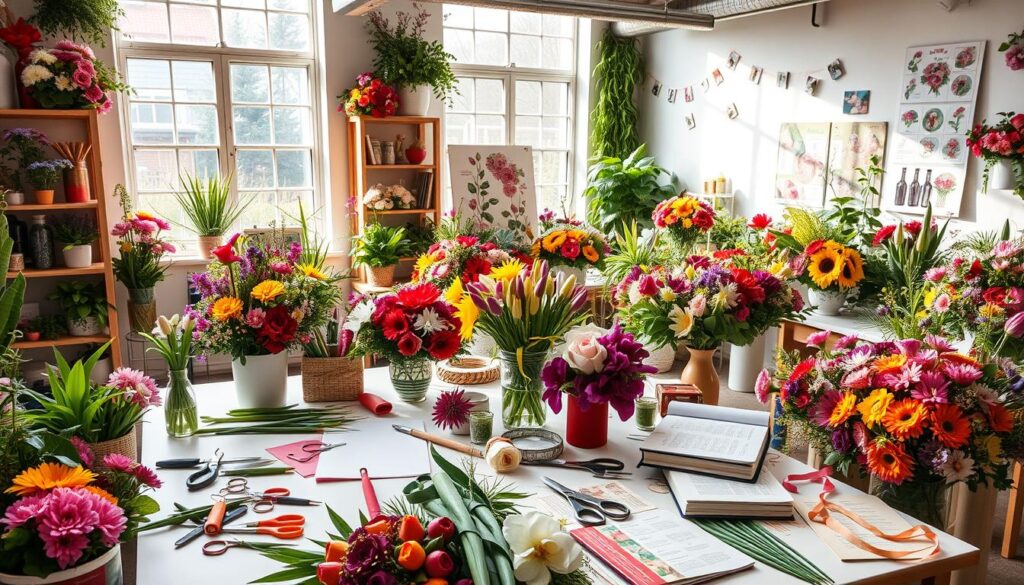
FFA Curriculum and Floral Design
The FFA curriculum has changed how we learn floral design. It mixes art with agriculture, giving students a unique experience. Many students are inspired by beautiful flower tattoos and floral designs to try this field.
- Comprehensive textbook resources
- Online learning platforms
- Hands-on practical training
- Digital design workshops
Workshops and Training Programs
Floral design programs in agriculture have grown a lot. In the last ten years, there’s been a 50% increase in courses. This means students have more chances to get special training.
| Program Type | Participation Rate | Student Outcomes |
|---|---|---|
| Local Workshops | 35% | Enhanced Creativity |
| Online Training | 25% | Professional Skills |
| Certification Programs | 60% | Career Readiness |
“Floral design is not just an art, it’s a pathway to understanding agricultural innovation and creativity.”
Students learn more than just flower arranging. They get skills for careers in design, business, and creative fields. It’s a great way to start a career.
Floral Design Techniques and Tips
Exploring floral design opens a world of creativity. It’s perfect for those who love unique designs or want to improve their skills. Learning key techniques can change how you arrange flowers.
Professional designers say success comes from both skill and vision. To make stunning arrangements, you need practice, passion, and the right knowledge.
Essential Tools for Floral Arrangement
Every floral artist needs the right tools. Here are the must-haves for beautiful designs:
- Sharp floral scissors
- Floral foam
- Waterproof tape
- Wire cutters
- Clean buckets for flower storage
Popular Floral Arrangement Styles
Floral design has many styles, from traditional to modern. Popular flowers like roses and peonies fit into different styles:
- Ikebana: Minimalist Japanese style focusing on simplicity
- English Garden: Lush, romantic arrangements
- Modern Minimalist: Clean lines and strategic placement
- Vintage-Inspired: Nostalgic and soft compositions
“Floral design is where technical skill meets artistic expression.” – Professional Floral Designer
Mastering these techniques boosts your confidence. You’ll create unique designs that really stand out.
Events Featuring Floral Design
Floral design is a vibrant part of the Georgia FFA program. It brings creativity and community together. Students show off their artistic skills in exciting events that celebrate botanical art.
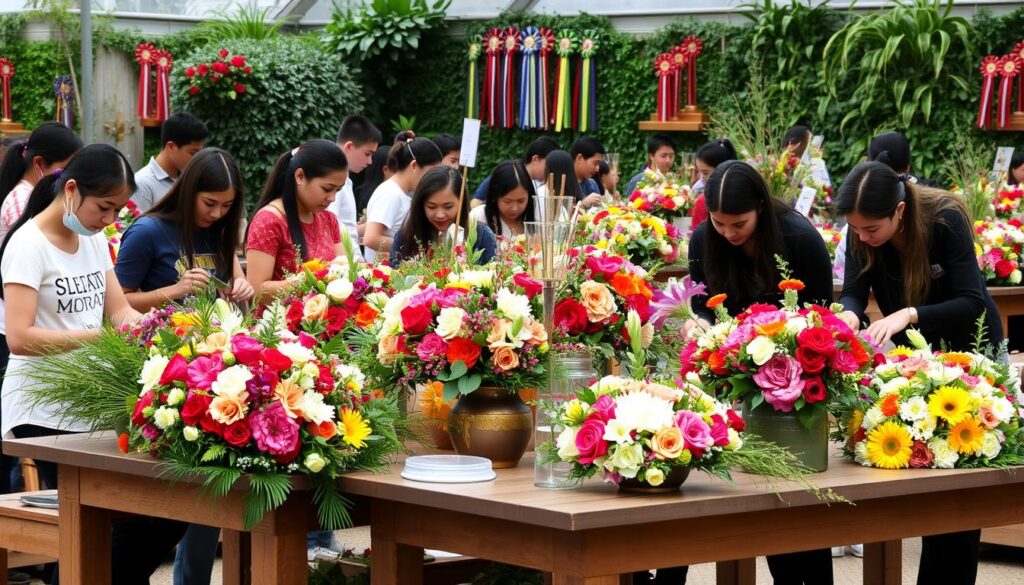
Showcasing Floral Artistic Talent
The Georgia FFA hosts many events to showcase young designers’ talents. About 15 floral design workshops are held each year across the state. Students learn new techniques in trendy tattoos and colorful flower ink.
- Annual State Floral Design Competition
- Regional Agricultural Expositions
- Community Service Flower Arranging Events
- Youth Agricultural Exhibitions
Community Engagement through Floral Art
FFA members are making a big difference through floral design. Studies show that 90% of students feel more confident in their art after competing. The number of participants has grown by 30% in three years.
“Floral design is more than just arranging flowers – it’s about creating connections and expressing creativity through agricultural art.” – Georgia FFA Floral Design Coordinator
These events do more than just showcase art. They help raise over $50,000 a year for local chapters’ projects. Students help out by making arrangements for charity and special events.
Learning and Growing through Floral Experiences
25% of FFA members nationwide are involved in floral design. These events help students develop skills. They learn new techniques and explore their creativity in colorful flower ink and designs.
Environmental Impact of Floral Design
Floral design is more than just pretty flowers. GA FFA members are leading the way in green practices. They show us how flower arranging can help our planet.
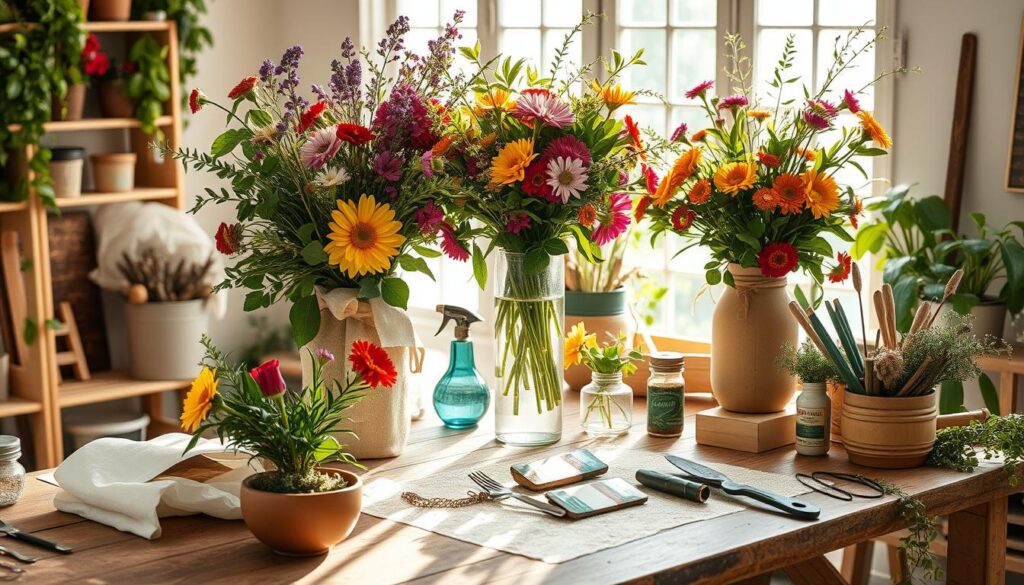
Sustainable Practices in Floral Arranging
Today’s floral design focuses on being green. Students learn to make beautiful tattoos and care for the earth. They use:
- Locally grown flowers to cut down on carbon
- Organic and chemical-free flowers
- Water-saving methods
- Recycling and composting
Promoting Pollinator-Friendly Designs
The top tattoo artists know pollinators are key. GA FFA teaches students to make arrangements that help bees and butterflies.
| Pollinator-Friendly Flower Types | Benefits |
|---|---|
| Lavender | Attracts bees, drought-resistant |
| Sunflowers | Supports multiple pollinator species |
| Echinacea | Provides nectar for butterflies |
“Every flower we choose can be a step towards environmental preservation.” – GA FFA Floral Design Instructor
Young designers are making a difference. They’re not just creating art; they’re working towards a greener future.
Career Opportunities in Floral Design
The world of floral design is full of exciting career paths. It’s perfect for those who love flowers and art. You can be a creative entrepreneur or a professional designer.

GA FFA Floral Design programs help students find their place in the floral world. Your skills can lead to many careers, like flower tattoo designs and floral art.
Pathways for FFA Members
- Professional Floral Shop Owner
- Wedding and Event Design Specialist
- Horticultural Therapist
- Botanical Garden Curator
- Freelance Floral Tattoo Artist
Industry Trends and Growth Prospects
The floral design world is always changing with new chances. New trends like green floristry and digital design are opening doors for creative minds. They’re interested in floral tattoo ideas.
| Career Path | Estimated Growth | Average Starting Salary |
|---|---|---|
| Floral Designer | 7% per year | $35,000 |
| Event Design Specialist | 12% per year | $45,000 |
| Botanical Consultant | 9% per year | $50,000 |
“The future of floral design is limited only by your creativity and passion.” – Professional Floral Designer
Your journey in floral design can open up amazing opportunities. Whether you love making beautiful arrangements or exploring new tattoo designs, there’s a place for you. The industry is your canvas for creativity.
Testimonials from FFA Floral Designers
Exploring floral design through FFA programs shows inspiring stories of growth and creativity. Students find unique designs that change how they see agricultural art.
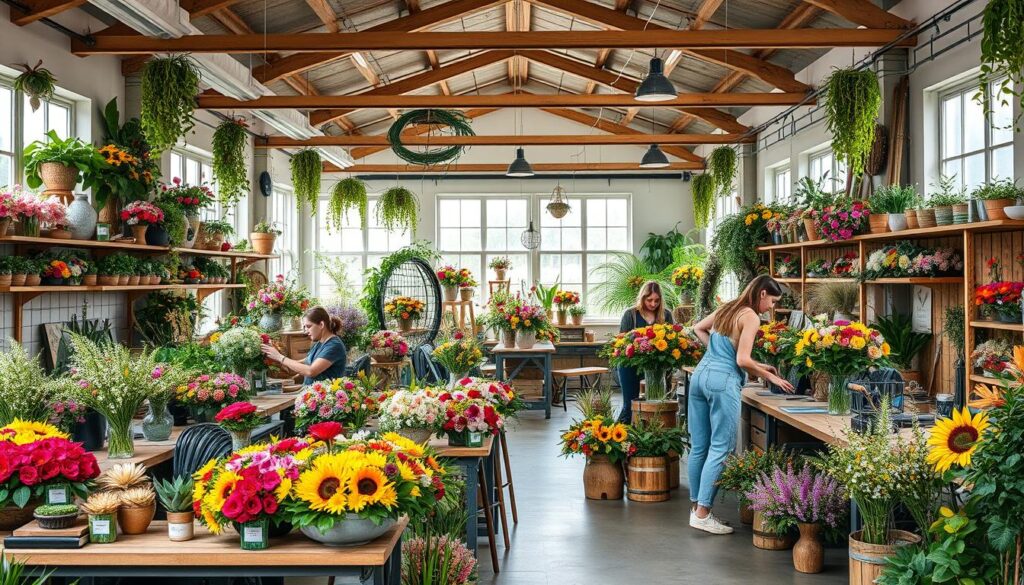
Young designers share amazing journeys of creativity through FFA’s education. Their stories show how FFA’s floral design program deeply impacts them.
Success Stories That Inspire
- Emily Rodriguez learned to make innovative floral arrangements that show her skills
- Marcus Thompson gained entrepreneurial skills through competitive design
- Sarah Kimura found her passion for sustainable farming
Personal Growth Through Floral Design
Participants often say they’ve had life-changing experiences. Floral design is more than art—it’s a journey to self-discovery and growth.
“FFA taught me that creativity has no limits. My unique designs became my voice and strength.” – Maria Gonzalez, FFA Alumni
| Skill Developed | Personal Impact |
|---|---|
| Creative Problem Solving | Increased Confidence |
| Technical Arrangement Skills | Career Preparation |
| Artistic Expression | Personal Empowerment |
Students like those featured show how floral design programs do more than teach art. They prepare future leaders in agriculture and creative fields.
Conclusion: The Future of GA FFA Floral Design
Floral design is changing fast, with GA FFA leading the way. Students are mixing old floral skills with new designs. They’re even using popular tattoo flowers to create unique pieces.
Technology is changing how young designers work. Digital tools let them try out new ideas and colors. Some are even using floral tattoos to inspire their designs, adding a personal touch.
Embracing Innovation in Floral Arts
GA FFA is teaching the next generation of floral designers. They learn about new tech and green farming. Students get to use digital tools, explore green materials, and learn to run their own businesses.
The Role of FFA in Advancing Floral Design
Being part of FFA is more than just learning to arrange flowers. It’s about growing your creativity, learning about farming, and getting ready for a career. The future of floral design is exciting, with GA FFA helping young artists grow.

